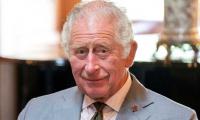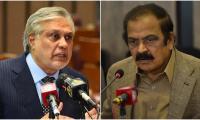KARACHI: The central bank foreign exchange reserves rose to $7.757 billion in the week ended Dec. 22, the highest level since August, boosted by inflows from multilateral lenders and friendly countries, official data and analysts said on Thursday.
The State Bank of Pakistan (SBP) said its reserves increased by $852 million, while the reserves of commercial banks fell by $65 million to $5.099 billion. The country’s total reserves increased to $12.856 billion.
The SBP did not disclose the sources and type of the inflows, but said they were official government receipts.
Analysts said the rise in forex reserves was mainly due to loan disbursements from the World Bank and the Asian Development Bank, as well as some bilateral assistance from countries such as China and Saudi Arabia.
The increase in foreign exchange reserves is good news for Pakistan's balance of payments, as the reserves can cover imports for about two months.
“…Good omen for Pakistan. Reserves would help improve liquidity, reserve cover and assist debt repayments,” said Samiullah Tariq, the head of research at Pak-Kuwait Investment Company.
Pakistan’s external sector showed improvement after the country secured a short-term $3 billion bailout package from the International Monetary Fund in July. The IMF’s lending programme has helped the country to obtain funding from multilateral institutions.
Under the IMF’s lending facility, Pakistan was able to secure immediate disbursement of $1.2 billion from the IMF along with financial support in the form of deposits as well as rollovers from friendly countries.
Furthermore, the IMF's stand-by arrangement (SBA) set stringent conditions that led to historic reforms for the exchange companies’ sector by the SBP and a crackdown on the unlawful hoarding, smuggling, and dealing of foreign currency in Pakistan. As a result, the rupee gained value to the US dollar.
After the gap between interbank and open-market rates narrowed considerably, the support for foreign exchange reserves materialised in the form of increased remittances through official channels and a reduction in the current account deficit.
Analysts expect the current account to remain largely balanced in the coming months.
Pakistan’s burgeoning current account deficit has remained a key concern for the past seven years given currency controls and massive fiscal spending.
“We expect the current account deficit to be limited in the range of $2.5-4 billion, as exports are rising due to reforms and imports are weak due to demand destruction following significant inflation burden in the last 2 years,” said Alfalah Securities in a report.
“BOP position however will remain tough for the upcoming 2 years, though manageable, especially given a successful experiment in putting administrative measures on imports to control current account whenever needed to fund the BOP.”
Pakistan’s external funding needs are estimated at $28.7 billion for the current fiscal year, including $24.6 billion for debt repayments and $4 billion for the financing of the current account deficit. Out of this, $5.48 billion has been repaid already and $9.3 billion has been agreed to be rolled over,.
This result in a funding gap of $14 billion is expected to be filled by foreign investments ($1.5 billion), the International Monetary Fund’s disbursements under its loan programme ($3 billion), and loans from other multilateral creditors ($4.5 billion). After this, the shortfall in the country’s gross external financing requirements and available funding is $5 billion. However, the country’s official reserves have fallen to around $7 billion as of December 15.
The picture shows a logo of Federation of Pakistan Chambers of Commerce & Industry . — APP/FileKARACHI: Atif Ikram...
The image shows the logo of the Securities and Exchange Commission of Pakistan . — APP/FileISLAMABAD: The Securities...
This image released on January 26, 2023, shows the logo of Archroma. — Facebook/ArchromaKARACHI: Archroma Pakistan...
The logo of the Trade Development Authority of Pakistan . — TDAP website. Mirpur: Kausar Taqadus Gilani, Minister...
This representational image shows Gold bars. — AFP/FileKARACHI: Gold prices in the local market dropped by Rs600 per...
Security personnel walk past the US Federal Reserve building in Washington, DC on Oct 22, 2021. —...







